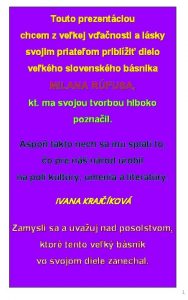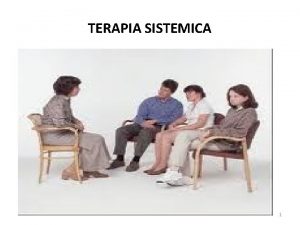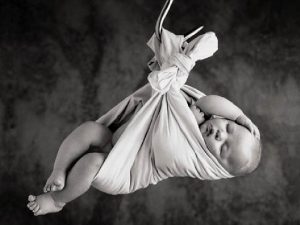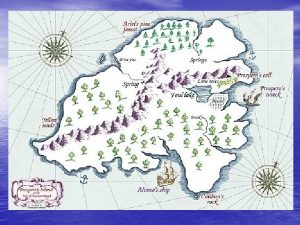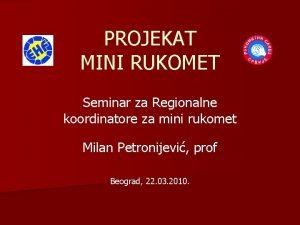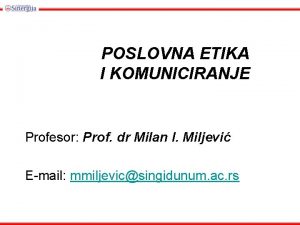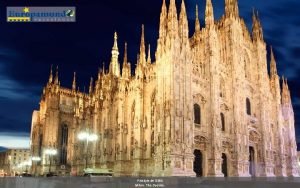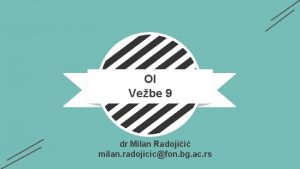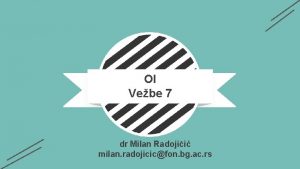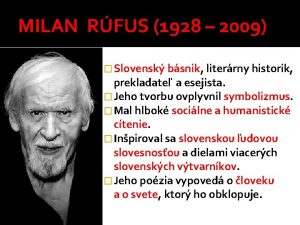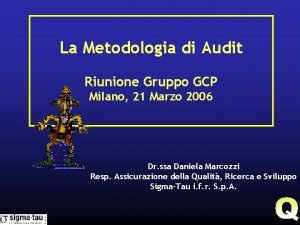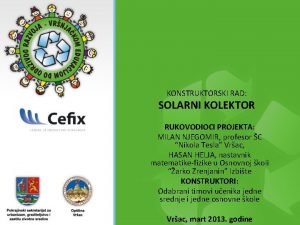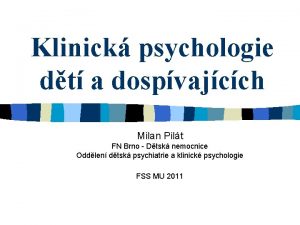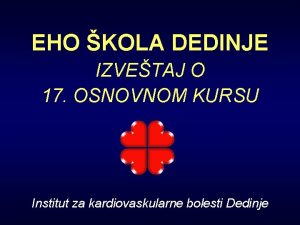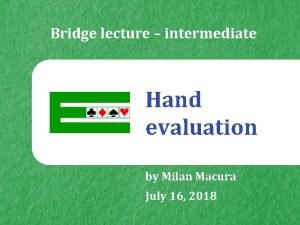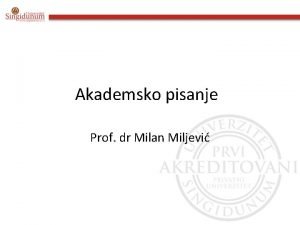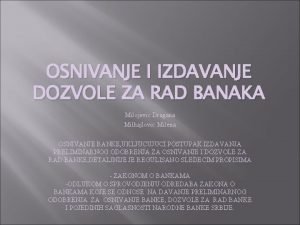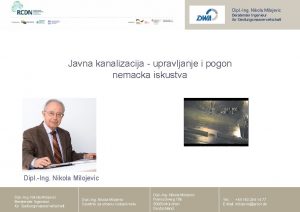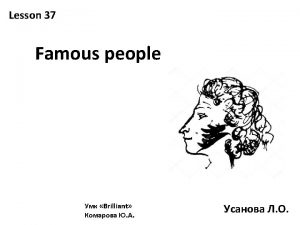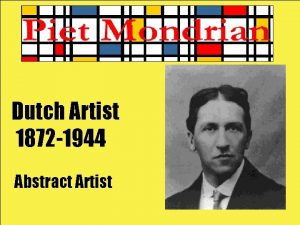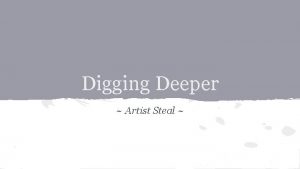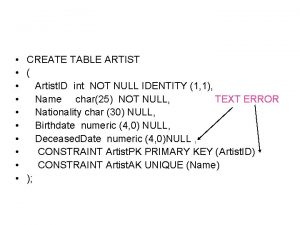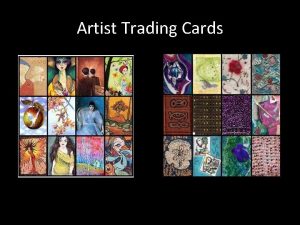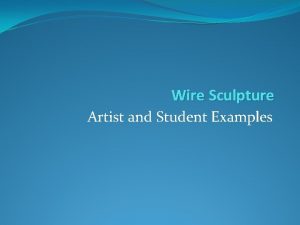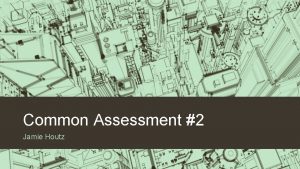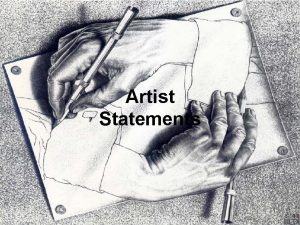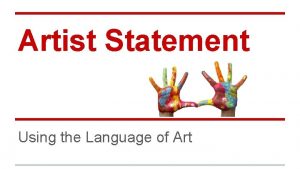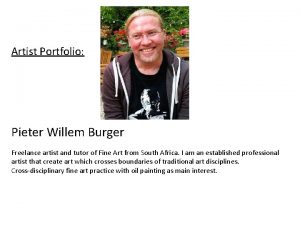Interpreting History Work from the artist Milan Milojevic



















- Slides: 19

Interpreting History Work from the artist Milan Milojevic Making Multicultural Australia - http: //www. multiculturalaustralia. gov. au


• Hobart-based artist Milan Milojevic, of Serbian-German origins, • focuses on issues of cultural displacement in much of his work, and on the consequences when one is forced, through political and other circumstances, to move to a new country. In some of his work, he uses photographs taken by his father during his early years in Australia, in combination with other images, to depict the migrant experience as it affected his parents at a time when new arrivals were treated as “outsiders. ”

• Milojevic’s prints also reflect his • evolving cultural identity here in Australia. Other work shows his disillusionment over recent events in the Balkans, with wild animals representing the evil instincts that can emerge in humans in war.


“Arrival” screenprint, photographs, 1991. • The central image is based on one of the artist’s father’s photographs of • • • what appears to be a de-lousing at the Bonegilla migrant reception centre during the period 1947 -49. On either side are passport photographs of his parents. The insensitivities of those dealing with newcomers in their treatment is a recurring theme in Milan Milojevic’s Arrival series. (Collection of the artist)


“Labourer - Arrival” silkscreen, 1990. • On their arrival here, full of great • • hopes for their future prospects, Australia’s post-war migrants found that their qualifications and experience from their home country were ignored - they were all classified as labourers. As with so much in the migrant experience, says Milan Milojevic, the hopes that had lured them here were dashed in the harsh reality of what awaited them. Collection of the artist.


“Fine Type” Arrival Series, silkscreen, 1990. • The medical checks post-war • • migrants went through before being allowed to come here, were a bit like a meat market, says Milan Milojevic. His father was among those, who had every part of their body measured and evaluated against a model of the “perfect” migrant - the “fine type” Australia was looking for. Collection of the artist.


“Golden Boys, ” Arrival series, lithograph, 1992. • In spite of the difficulties migrants • • faced on arrival here, Milan Milojevic says he wanted to also illustrate the hopes of the newcomers. Here, he illustrates their optimism, as they start again, and build up a new life in a new place. Collection of the artist.


“Bronte Park I, ” screenprint, 1992. • This is part of a multi-panelled work which depicts the labour camp for the • • hydro-electric scheme at Bronte Park, where the artist’s father worked. Milan Milojevic says it conjures up “the harsh, inhospitable environment that my father and others encountered as their first experience of Tasmania. ” Collection of the artist.


“ Apocalypso/Calypso, Part I, ” etching, 1995. • This series of etchings is based on the war in the Balkans, with the conflict • • being depicted by confrontational beasts. Milojevic says the human being can become “a dangerous wild animal” when, in certain circumstances, his “evil instincts” are released. Collection of the artist.


“Apocalypso/Calypso, Part II, ” etching, 1995. • Speaking about this series on the Balkans war, Milojevic says: • “I was angry at the futility of the destruction that was taking place, the • deterioration of this ‘imaginary homeland’ that I had been constructing. . . The images are very dark. I wanted them to look as though they had just come out of a smouldering fire. . . ” Collection of the artist.

• • These images are free for your use for educational purposes, however not for publication. For more copyright information go to www. multiculturalaustralia. gov. au
 Geton slovenija
Geton slovenija Geton trading premium
Geton trading premium Anjeličku môj strážničku sadnime si na lavičku
Anjeličku môj strážničku sadnime si na lavičku Geyman ciclo vital
Geyman ciclo vital Dr milan mrdak
Dr milan mrdak Rightful duke of milan
Rightful duke of milan Milan petronijevic rukomet
Milan petronijevic rukomet Nntiempo
Nntiempo Milan miljevic
Milan miljevic Paisajes
Paisajes Milan radojicic fon
Milan radojicic fon Dr. milan radojicic
Dr. milan radojicic Zvony detstva
Zvony detstva El duomo milan
El duomo milan Audit gcp
Audit gcp Milan njegomir
Milan njegomir Mgr. milan pilát
Mgr. milan pilát Dr milan vukovic kardiolog
Dr milan vukovic kardiolog Bridge hand evaluation
Bridge hand evaluation Milan miljevic biografija
Milan miljevic biografija


